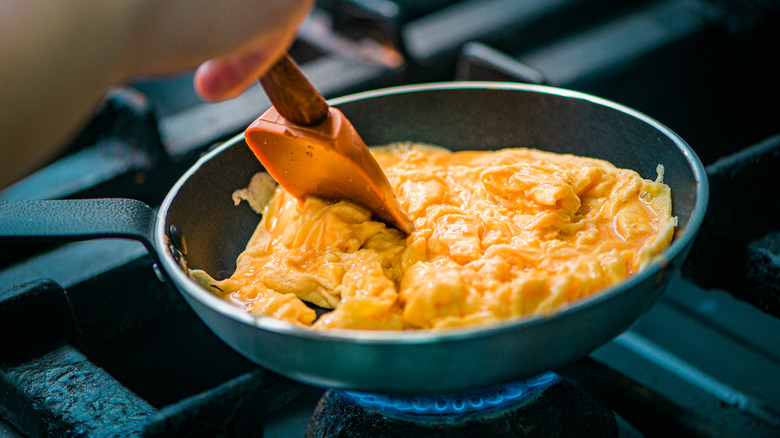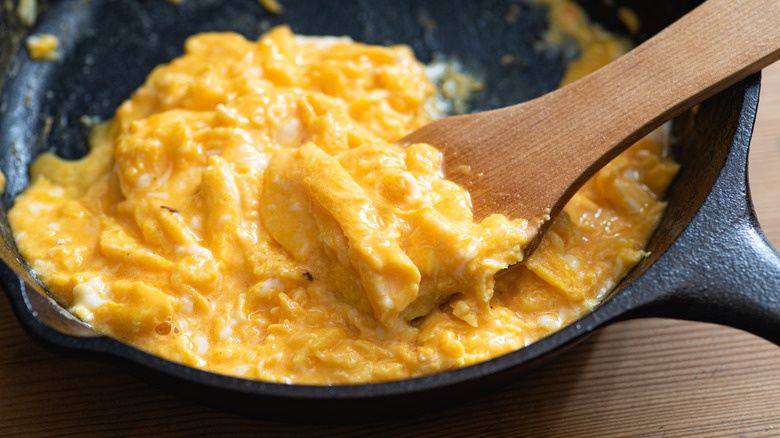Here's Why Your Scrambled Eggs Really Turned Gray In Color
Unless you're using just the whites, it's safe to assume your scrambled eggs will be yellow. The actual shade of yellow will vary, but only ever so slightly based on the color of the yolk. If the chicken was fed only wheat or barley, for example, its yolks will be light yellow, but if its diet also included darker pigmented foods, its yolk will be darker, too. But in some cases, your scrambled eggs can adopt a grayish hue.
Gray scrambled eggs are typically accompanied by a distinct texture. Instead of light and fluffy, the curds tend to be tough and dry. This is due to the fact that both the color and texture of scrambled eggs are affected by the cooking temperature. For best results, therefore, most recipes suggest sticking to medium-low. You can probably deduce why cranking the heat any higher than medium-low would cause scrambled eggs to overcook, but why does it affect the color?
Gray eggs are the result of a chemical reaction
It's easy to assume that if your scrambled eggs are gray, it's because they've gone bad, but the truth is the color has nothing to do with the taste. They might look unappetizing, but gray eggs are perfectly safe to eat. The change in color is all but a result of a chemical reaction caused by too high of a temperature: What happens is the sulfur in the egg white and the iron in the egg yolk combine and react with the heat, creating a compound called ferrous sulfide, which is what can give eggs a grayish color.
A gas has to be formed in order for the color change to occur and this only happens when the internal temperature of the eggs hits a temperature of 158 degrees Fahrenheit or hotter. If your scrambled eggs have no trace of yellow left, it's because the temperature was higher than that.
How to prevent scrambled eggs from turning gray
Since gray eggs are caused by high heat, you obviously want to avoid overcooking them. But if you're not entirely sure at what point eggs are considered overcooked, there are a few ways to determine when to take them off the stove to prevent them from turning shades without a thermometer.
For starters, you'll want to use a stainless steel pan and keep the temperature on the lower side. Once the eggs are scrambled, rather than turning off the heat right when they have completely firmed up, it's better to do so when they still look a bit runny. The eggs will continue cooking after they're removed from the burner because the pan retains heat. So, if the eggs are fully cooked, the temperature could easily cross the 158-degree Fahrenheit threshold even if the stove is off, thus turning your eggs gray.
Take this residual heat into account and this shouldn't be a problem.


